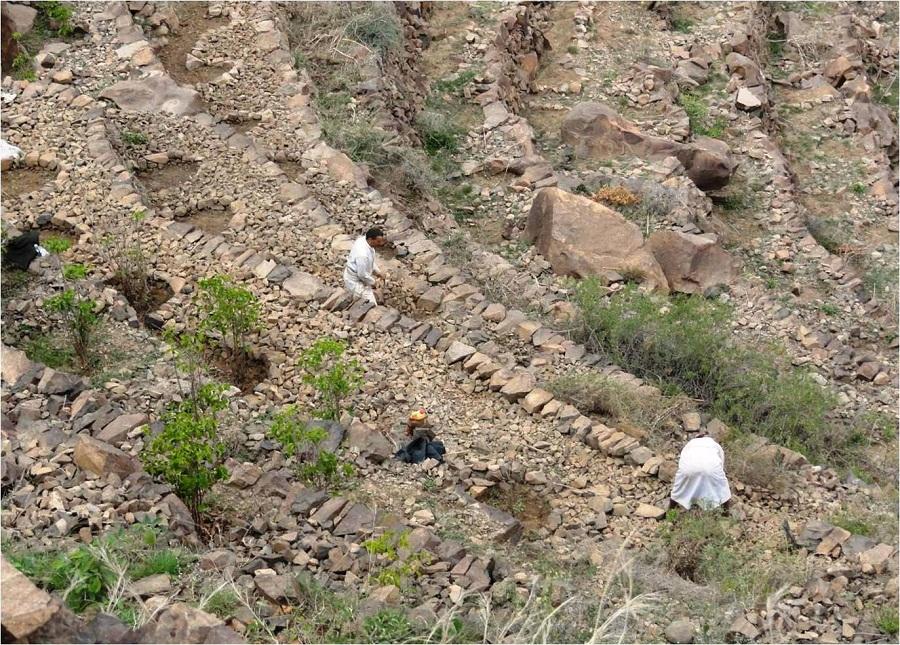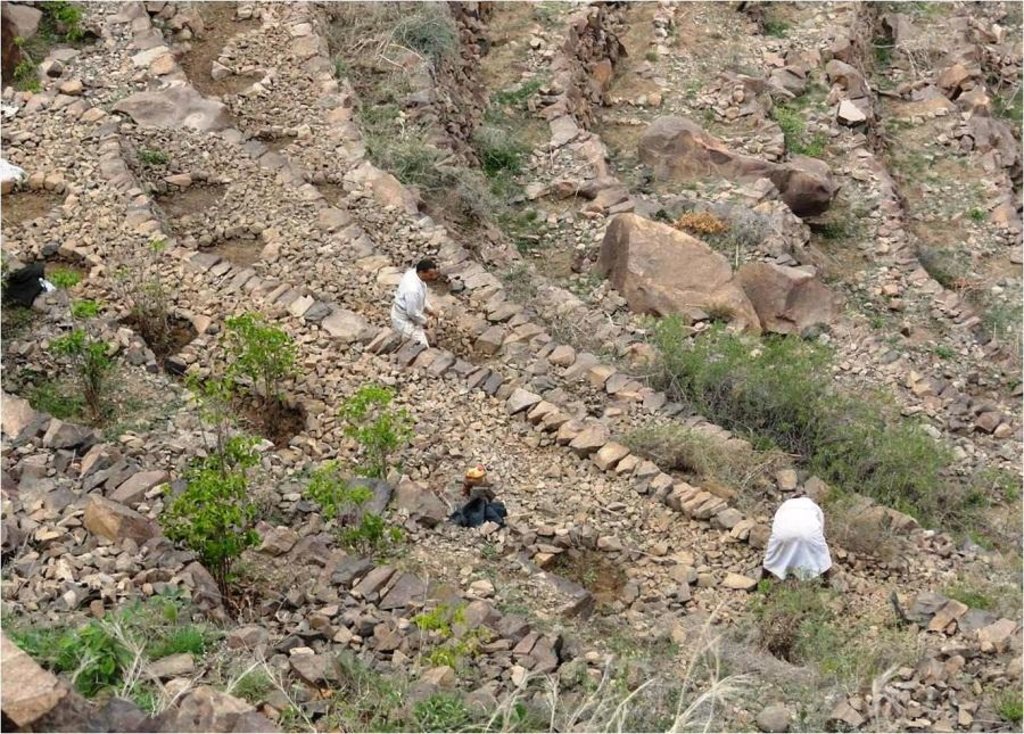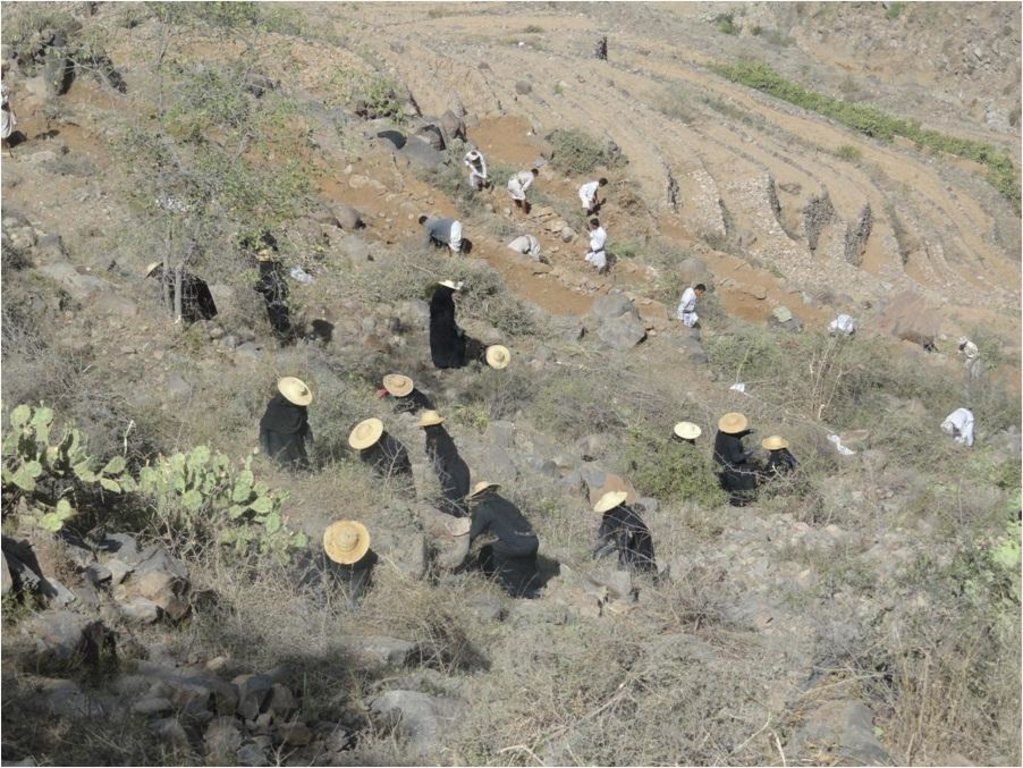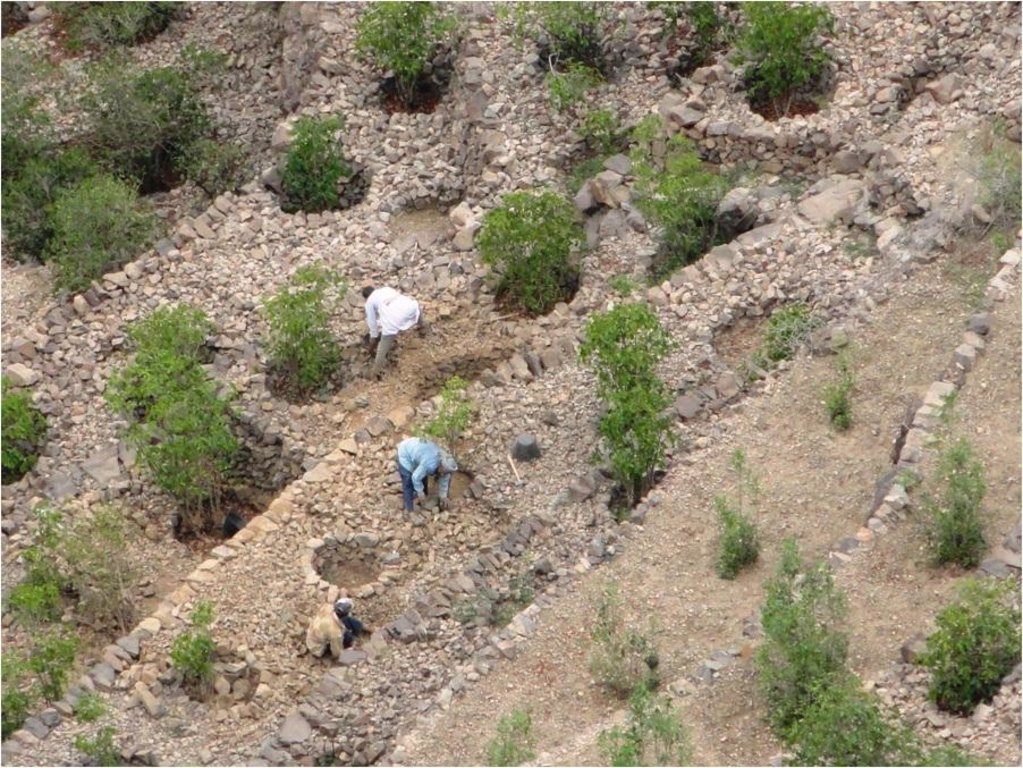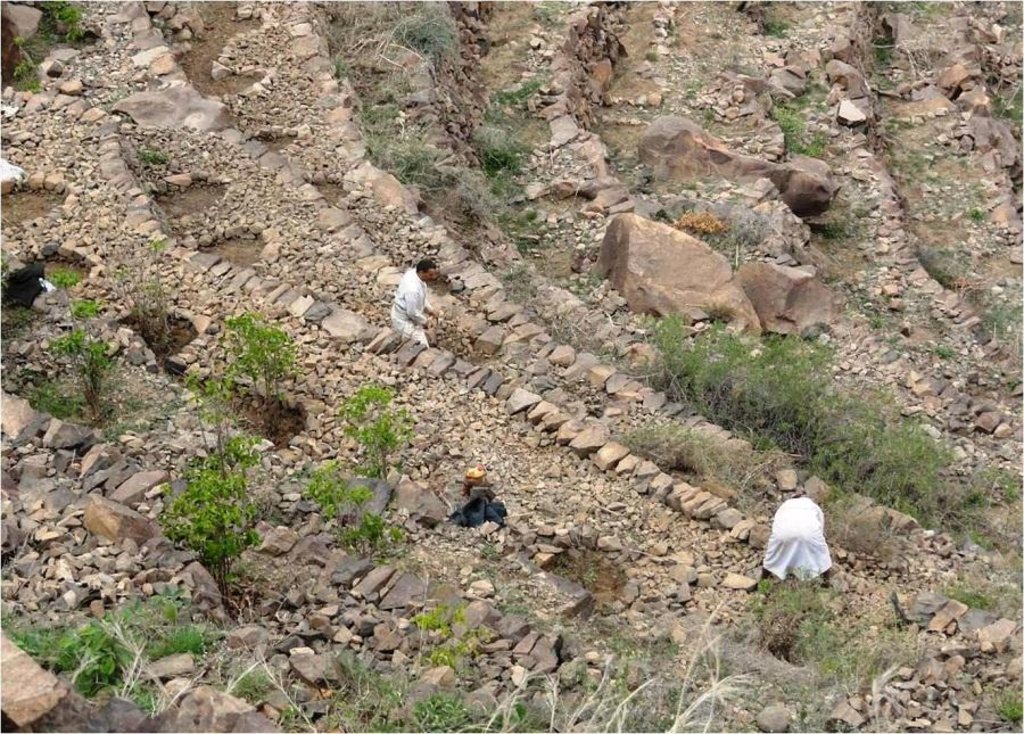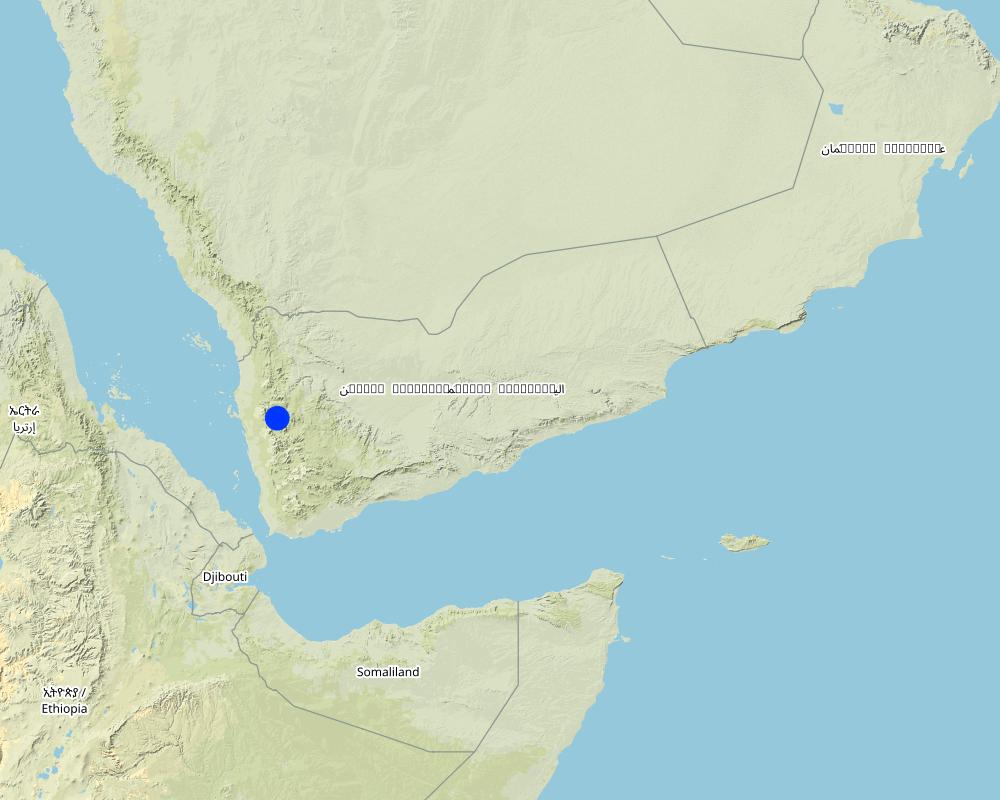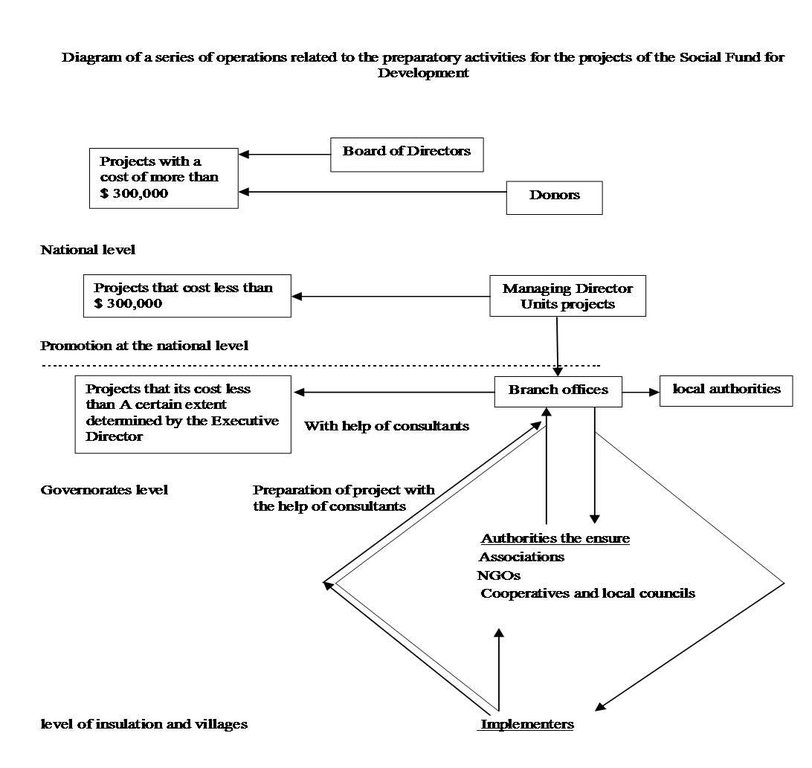Building and rehabilitation of agricultural terraces. [Yémen]
- Création :
- Mise à jour :
- Compilateur : ahmed algalal
- Rédacteur : –
- Examinateurs : Fabian Ottiger, Joana Eichenberger
بناء وإعادة تأهيل المدرجات الزراعية
approaches_2586 - Yémen
Voir les sections
Développer tout Réduire tout1. Informations générales
1.2 Coordonnées des personnes-ressources et des institutions impliquées dans l'évaluation et la documentation de l'Approche
Spécialiste GDT:
Ibrahem Abdullah
00967777595480
Agricultural Research and Extension Authority, AREA
Yémen
Nom du ou des institutions qui ont facilité la documentation/ l'évaluation de l'Approche (si pertinent)
Agricultural Research and Extension Authority (AREA) - Yémen1.3 Conditions relatives à l'utilisation par WOCAT des données documentées
Quand les données ont-elles été compilées (sur le terrain)?
20/02/2013
Le compilateur et la(les) personne(s) ressource(s) acceptent les conditions relatives à l'utilisation par WOCAT des données documentées:
Oui
1.4 Références au(x) questionnaire(s) sur les Technologies de GDT
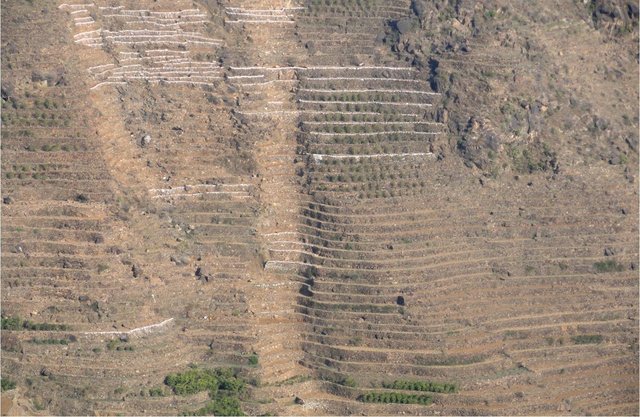
Bench terraces covered with small stones [Yémen]
Building terraces in steep areas for the purpose of reducing the slope, water harvesting and soil moisture conservation.
- Compilateur : ahmed algalal
2. Description de l'Approche de GDT
2.1 Courte description de l'Approche
Pay incentives for farmers rehabilitate degraded terraces in order to face the crisis of increasing food prices.
2.2 Description détaillée de l'Approche
Description détaillée de l'Approche:
Aims / objectives: The main objective is to rehabilitate the degraded terraces and to protect them from erosion through the payment of incentives. Conservation of land resources should be achieved through cooperation between the land users applying local knowledge and traditional practices for soil conservation. Through this, the livelihoods of land users are improved and it helps them to continue their farming operations which helps to alleviate poverty. Through the Social Development Fund the state aims to improve community development through a comprehensive concept and to address the crisis of rising food prices. Through this fund land users receive support for their physical work. The rehabilitated terraces will later help them to improve their agricultural income The project interferes in the region through the involvement of land users (from bottom to top). To help them solve their problems, a study of the region’s problems using Participatory Rapid Rural Appraisal (PRA) and a Participatory Learning Approach (PLA) was conducted. With the participation of the community problems and constraints were identified and appropriate solutions developed, as well as priorities identified for intervention. An inventory of households was done by a dedicated team to determine the costs and the appropriate methods for the implementation process and the mechanisms used for the implementation. Furthermore awareness rising was carried out. After completion of the technical study and determination of the costs, the areas where the activities should be implemented were assigned to a specialist. After the technical study is finished and the cost of implementing for the targeted area is determined and allocated. Then Social Fund for Development office SFD appoints specialized person to follow up the implemented activities ,which usually carry out by the land users and as long as they finished the implemented activities they should receives their money (this the explanation of SDF and receivables). It should be noted that there is a lack of funding all the degraded areas, so that the SFD select only the degraded areas which are their owner unable to rehabilitate them.
2.3 Photos de l'approche
2.5 Pays/ région/ lieux où l'Approche a été appliquée
Pays:
Yémen
Région/ Etat/ Province:
Sana'a governorate
Autres spécifications du lieu :
Bani Ismail- Manakha District
Map
×2.6 Dates de début et de fin de l'Approche
Indiquez l'année de démarrage:
2010
Date (année) de fin de l'Approche (si l'Approche n'est plus appliquée):
2011
2.7 Type d'Approche
- fondé sur un projet/ programme
2.8 Principaux objectifs de l'Approche
The Approach focused mainly on SLM with other activities (Facing increasing food prices i.e. Money against work.)
Rebuilding the degraded terraces and protect them from degradation
The SLM Approach addressed the following problems: Lack of money for implementing terraces, poverty.
2.9 Conditions favorisant ou entravant la mise en œuvre de la(des) Technologie(s) appliquée(s) sous l'Approche
disponibilité/ accès aux ressources et services financiers
- entrave
Not enough finances available.
Treatment through the SLM Approach: Supporting land users with funds (money against work).
cadre juridique (régime foncier, droits d'utilisation des terres et de l'eau)
- favorise
The existing land ownership, land use rights / water rights greatly helped the approach implementation: Initiate all land users in rehabilitating the degraded terraces without any conflict as long as they believe of work together and with spirit team work.
3. Participation et rôles des parties prenantes impliquées dans l'Approche
3.1 Parties prenantes impliquées dans l'Approche et rôles
- exploitants locaux des terres / communautés locales
Both gender men and women. Men have more experience and more power for work than the women. Women carried out the weeding in the field in addition to food preparation at home.
- Spécialistes de la GDT/ conseillers agricoles
- gouvernement national (planificateurs, décideurs)
3.2 Participation des exploitants locaux des terres/ communautés locales aux différentes phases de l'Approche
| Participation des exploitants locaux des terres/ communautés locales | Spécifiez qui était impliqué et décrivez les activités | |
|---|---|---|
| initiation/ motivation | interactive | Identified the problems, suggested solutions and determined the priority for implementation – local community |
| planification | interactive | |
| mise en œuvre | interactive | Land users carried out all the implementation under the supervision of supporting donors. |
| suivi/ évaluation | aucun | |
| Research | aucun |
3.3 Diagramme/ organigramme (si disponible)
Description:
Diagram of a series of operations related to the preparatory activities for projects the Social Fund for Development
Auteur:
(Sana'a)
3.4 Prises de décision pour la sélection de la Technologie/ des Technologies
Indiquez qui a décidé de la sélection de la Technologie/ des Technologies à mettre en œuvre:
- les exploitants des terres seuls (auto-initiative)
Expliquez:
It is a traditional technology and still exist but it needs maintenance.
Decisions on the method of implementing the SLM Technology were made by mainly by land users supported by SLM specialists. The approach for implementation can be done by consulting and discussing it with the land users.
4. Soutien technique, renforcement des capacités et gestion des connaissances
4.1 Renforcement des capacités/ formation
Une formation a-t-elle été dispensée aux exploitants des terres/ autres parties prenantes?
Oui
Spécifiez qui a été formé:
- exploitants des terres
Formats de la formation:
- Meetings
Thèmes abordés:
Awareness campaign to increase the importance on preserving land and conserving it to avoid any damages as a result of degradation as then it becomes difficult to repair it by the land users. Finally, this situation will lead to land abandonment and emigration.
4.2 Service de conseils
Les exploitants des terres ont-ils accès à un service de conseils?
Oui
- Meetings
4.3 Renforcement des institutions (développement organisationnel)
Des institutions ont elles été mises en place ou renforcées par le biais de l'Approche?
- non
4.4 Suivi et évaluation
Le suivi et l'évaluation font ils partie de l'Approche? :
Oui
Commentaires:
technical aspects were regular monitored by project staff through measurements; indicators: None
socio-cultural aspects were regular monitored by project staff, land users through measurements; indicators: None
economic / production aspects were ad hoc monitored by project staff through observations; indicators: None
no. of land users involved aspects were regular monitored by project staff through measurements; indicators: None
bio-physical aspects were ad hoc monitored by project staff through observations; indicators: None
management of Approach aspects were regular monitored by project staff, land users through observations; indicators: None
There were few changes in the Approach as a result of monitoring and evaluation: Increase the target area
There were no changes in the Technology as a result of monitoring and evaluation: None
4.5 Recherche
La recherche a-t-elle fait partie intégrante de l’Approche?
Non
5. Financement et soutien matériel externe
5.1 Budget annuel de la composante GDT de l'Approche
Si le budget annuel précis n'est pas connu, indiquez une fourchette:
- 10 000-100 000
Commentez (par ex. principales sources de financement/ principaux bailleurs de fonds):
Approach costs were met by the following donors: government (Labour (Money against work).): 100.0%
5.2 Soutiens financiers/ matériels fournis aux exploitants des terres
Les exploitants des terres ont-ils reçu un soutien financier/ matériel pour la mise en œuvre de la Technologie/ des Technologies?
Oui
Si oui, spécifiez le(s) type(s) de soutien, les conditions et les fournisseurs:
Money against work
5.3 Subventions pour des intrants spécifiques (incluant la main d'œuvre)
Si la main d'œuvre fournie par les exploitants des terres était un intrant substantiel, elle était:
- payée en espèces
Commentaires:
Conducting works by contracting
5.4 Crédits
Des crédits ont-ils été alloués à travers l'Approche pour les activités de GDT?
Non
6. Analyses d'impact et conclusions
6.1 Impacts de l'Approche
Est-ce que l'Approche a aidé les exploitants des terres à mettre en œuvre et entretenir les Technologies de GDT?
- Non
- Oui, un peu
- Oui, modérément
- Oui, beaucoup
Periodical maintenance is very important for terraces to protect them from degradation and conserving soil moisture as well.
Did other land users / projects adopt the Approach?
- Non
- Oui, un peu
- Oui, modérément
- Oui, beaucoup
Did the Approach lead to improved livelihoods / human well-being?
- Non
- Oui, un peu
- Oui, modérément
- Oui, beaucoup
Did the Approach help to alleviate poverty?
- Non
- Oui, un peu
- Oui, modérément
- Oui, beaucoup
Rehabilitating degraded terraces bringing them back into production. Consequently alleviation of poverty.
6.2 Principale motivation des exploitants des terres pour mettre en œuvre la GDT
- augmenter la production
Increase the amount of production
- conscience environnementale
- Decrease the emigration.
Provide livelihoods (re-construction of terraces)
- Protect the land from erosion.
6.3 Durabilité des activités de l'Approche
Les exploitants des terres peuvent-ils poursuivre ce qui a été mis en œuvre par le biais de l'Approche (sans soutien extérieur)?
- incertain
Si non ou incertain, spécifiez et commentez:
Lack of financial resources
6.4 Points forts/ avantages de l'Approche
| Points forts/ avantages/ possibilités du point de vue de l'exploitant des terres |
|---|
| Use the available resources to rehabilitation of terraces. It means:'Rehabilitation of terraces should be depend on the existing materials in the region such as stones or water, and labour). |
| Points forts/ avantages/ possibilités du point de vue du compilateur ou d'une autre personne ressource clé |
|---|
| Work together in groups strengthens the social relationship between land users, which leads to increased initiative or motivation between them. Like this they are prepared to face any damage that may occur as a result to natural crisis such as climate change or drought. (How to sustain/ enhance this strength: Legislation should be implemented because it will lead to enhance the links between the local community and raise the work together in every business. it mean: 'It should be implemented and adopted ) |
6.5 Faiblesses/ inconvénients de l'Approche et moyens de les surmonter
| Faiblesses/ inconvénients/ risques du point de vue du compilateur ou d'une autre personne ressource clé | Comment peuvent-ils être surmontés? |
|---|---|
|
There are some regions which are still degraded and that have not been yet rehabilitated due to lack of financial resources |
Supporting farmers to rehabilitate the degraded land especially the terraces to achieve sustainable development and stop migration from rural areas to big cities. This can be done and to through alleviating poverty and at the same time preserving the limited land resources and utilized them in a sustainable way. |
7. Références et liens
7.1 Méthodes/ sources d'information
- visites de terrain, enquêtes sur le terrain
- interviews/entretiens avec les exploitants des terres
7.2 Références des publications disponibles
Titre, auteur, année, ISBN:
Technical study for construction and reclamation for terraces in some villages, Bani Ismail's uzlah, Manakhah district. Mid-monthly reports for implanting terraces construction in Bani Ismail's uzlah, Manakhah district.
Disponible à partir d'où? Coût?
- Social Fund for Development, Sana'a 97671449672- Social Fund for Development, Sana'a 97671449672
Titre, auteur, année, ISBN:
Mid-monthly reports for implanting terraces construction in Bani Ismail's uzlah, Manakhah district.
Disponible à partir d'où? Coût?
Social Fund for Development, Sana'a 97671449672
Liens et modules
Développer tout Réduire toutLiens

Bench terraces covered with small stones [Yémen]
Building terraces in steep areas for the purpose of reducing the slope, water harvesting and soil moisture conservation.
- Compilateur : ahmed algalal
Modules
Aucun module trouvé


